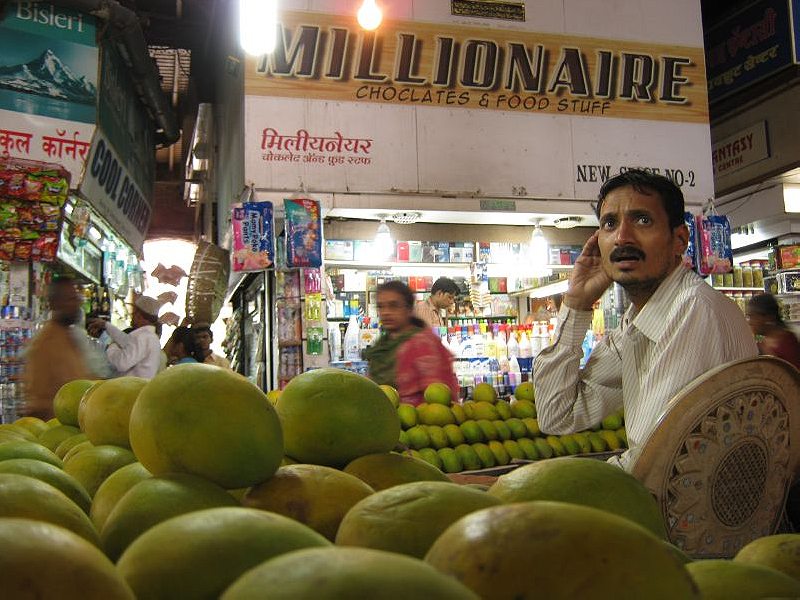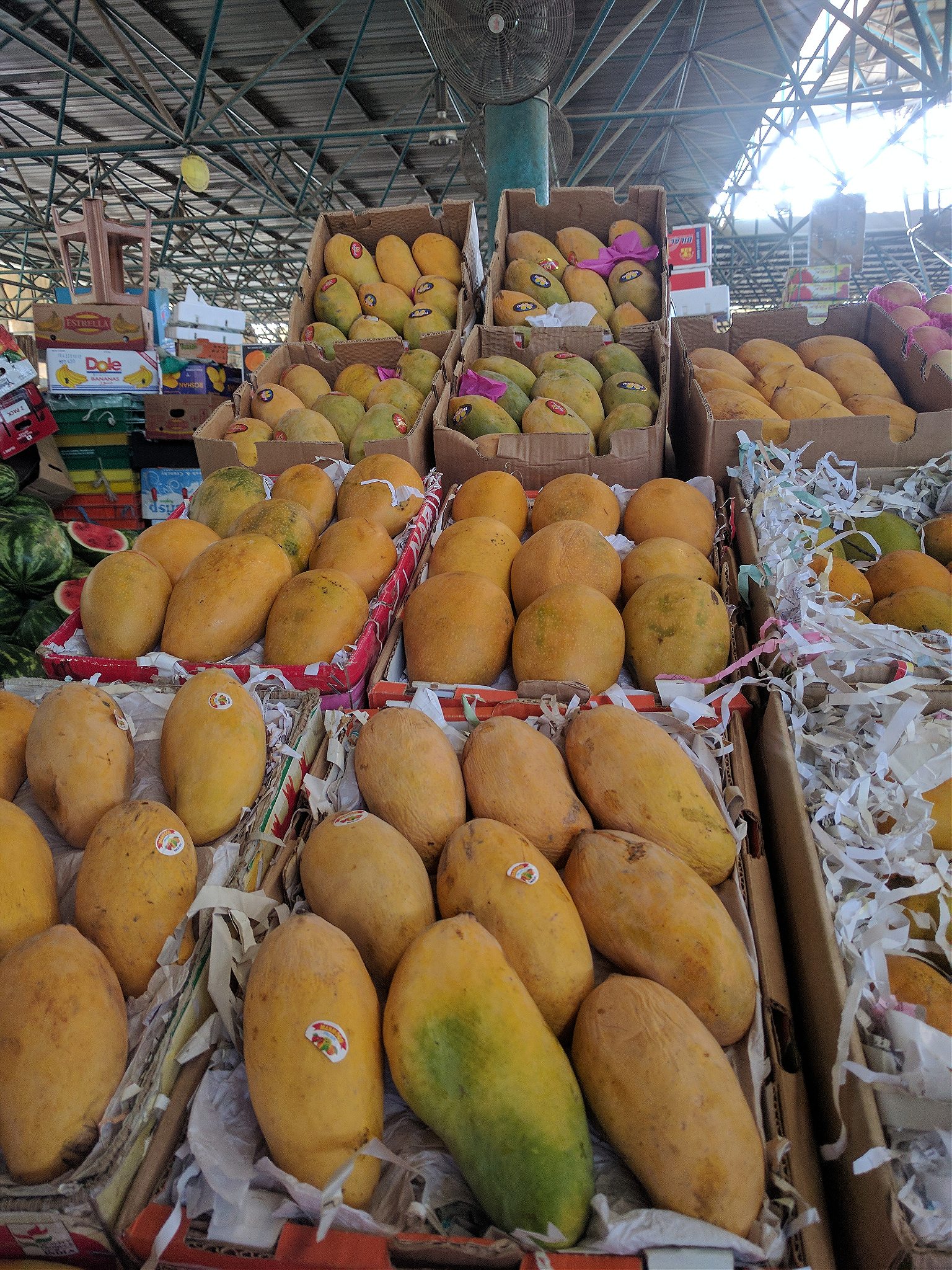One man’s search for the perfect fruit takes him across a political divide.
If left to my own devices, I’d never have visited Apna Pakistan. The name means Our Pakistan, and I am a reasonably patriotic Indian. The supermarket lay in Dubai’s Al Karama area, one densely populated by Indian and Pakistani immigrants. Behind it was a restaurant called Mumbai se, literally From Mumbai, and diagonally opposite to it, across the street, was my favorite, Bikanerwala, named after a town in India, Bikaner. In other words, there were plenty of red-blooded Indian options for me to choose from. But one summer in Dubai, all the Indian supermarkets failed me.
I first ventured into Apna Pakistan in the search of a very specific gourd variety, the luffa. I was looking for an Indian version of it, long, slender, dark green in color, and not the spongy kind I had encountered in other markets in Dubai. It was specific to Indian summers, and when cooked the right way, it took me back to my mother’s simple but immensely gratifying cooking, the kind of stuff you’d never find in a restaurant. There was another item, though, that invariably accompanied all those summer meals at home with the gourd: mangoes. Their presence made the meals complete, either sliced or as juice—called ras in western India—an indicator that life was normal and that there was still hope in the summers, even when the thermometer edged past 100 degrees Fahrenheit.
Some 500 years back, a certain Afonso de Albuquerque, considered one of the greatest European conquerors of his time, invaded the western coast of India around Mumbai and Goa. He brought with him more than just the Portuguese army. He brought a variety of mangoes that would rule the hearts of Indians for generations to come: the Alphonso, named after him.
I spent several years of my life working in the bustling metropolis of Mumbai and there, a large part of summer evenings was dedicated to finding the best quality mangoes in the city. I scoured the most obscure streets for the perfect Alphonso. Those that came from Ratnagiri were the most famous, but there were mangoes from towns all around Mumbai. Whichever variety one chose, the test remained the same. It should have non-uniform colors, a mixture of yellow, green, and probably a bit of crimson; shouldn’t be too stiff or too squishy when held in the hand; and must heavily invigorate the olfactory senses even from a distance. For almost three months every year, my home was perfumed by arguably the best mangoes of India.

When I moved to Dubai, I was apprehensive about the mangoes I’d find here. I started my efforts my first summer, ducking under awnings of stores to somehow escape the scorching Dubai sun, frantically searching supermarket after supermarket, sniffing my way through their fruit sections. Yes, I found the Alphonsos of Mumbai, “export quality” as their packings would proudly claim, but they were nowhere close to those in Mumbai. In perfectly arranged crates of mangoes from Spain and Portugal, I tried searching for the ancestors of the Alphonso. There was the R2E2 variety from Australia, but those only arrived in winter months. There were the Kenyan and Egyptian mangoes; they tasted good, slightly tangy, yet left something to be desired. There were eye-candy mangoes from South American countries that sold for a small fortune, but each time I was disappointed.
You see, in the Indian sub-continent, mangoes are a very sensitive subject. Even within families, nothing reveals fault-lines more clearly than our preferences about the fruit. My father loves a certain Chaunsa variety, my mother swoons for the extra-sweet Dussehri, and I owe my allegiances to the aforementioned Alphonso. My friends from Delhi and Mumbai would fight over how the Alphonso was either the worst or best mango in the world, depending on which city they came from. I’m sure that at some point in our medieval history this debate could easily have led to one of the several wars between the clans of the Mughals, who ruled Delhi, and the Marathas, who ruled Mumbai. I, however, come from central India, and its ruling clans and their battles are lesser known. So, in the middle of all this mango imperialism, I could not even talk about the humble but delicious Badami variety that ruled our hearts and tongues for a good two months of the year. Which is why when I was first drawn by the intense smells of fresh Pakistani mangoes flown in from Karachi at Apna Pakistan, I was seriously questioning my allegiances to my country. This could be heresy, blasphemy, even pure treason!
Seventy years ago, India was partitioned into two states, India and Pakistan. Some of my closest Indian friends can still trace their ancestries to Pakistan. They all had the same story, grandparents who migrated from the western state of Punjab, or Eastern Bengal (now Bangladesh) settled in Indian Punjab, Delhi, or Kolkata, and began life afresh. It was later, in Dubai, when I first met people who had very similar stories but the other way around. People my age who were third-generation kids of those who had migrated away from India to Pakistan. In talks over lunch, we would exchange stories of how similar our halwa puris were, or the nuances that made their kshir korma different from our dessert kheer. It was also in Dubai where I first tasted mangos that traced their origins to India but were loved all over Pakistan.
The Anwar Ratol was one such variety. Pakistanis swore by its sweetness. In his book A Tryst with Mango, Dr. Om Prakash quotes an article in The Pioneer newspaper published in July 1981 about Ratol mangoes being gifted by Zia Ul-Huq to Indira Gandhi, then the Prime Ministers of Pakistan and India respectively. It then goes on to quote a former Nawab (ruler) of Ratol, a village in the northern province of India, who claims that a sapling of this plant was taken from India to Pakistan during the partition.
These mangoes had to be pampered, caressed, and cajoled into oozing the juice
Ratols, though, reminded me of the summer holidays we spent at my Nana’s place, where not one, not two, but dozens of very small desi mangos (very similar to Ratol) would be drowned in a bucket of water, to drain out their excessive heat. As kids we would pick up one or two, roll them between our palms and suck out the juice from them, a natural tetrapack. When the Indian mango season passed (the mango season in India runs roughly from April to July and in Pakistan from June to September) and the Anwar Ratol from Pakistan continued to flood Dubai markets, I started buying them for the mandatory ras at home. But this juice couldn’t be made by cutting the mango in pieces and throwing it into a blender, the way my mother made it. The Anwar Ratols had to be pampered, caressed, and cajoled into oozing the juice, and then sieved into a large bowl, the old-fashioned way, the way my grandmother did, sitting for hours, extracting juice for the entire family: children, grandchildren, and even great-grandchildren. This was slow food at its best in a pint-sized mango.
Then there was the Sindhri, which came from the province of Sindh in Pakistan. In summers, Sindh swelters in heat and, as my Pakistani colleagues tell me, the hotter the climate, the sweeter the mango. Sindhri has a very thin yellow skin, has very little fiber content, and is big, sometimes too big to hold in one hand. Even in the larger fresh vegetable markets of Dubai, in the historical Deira neighborhood, Sindhri’s widespread aroma can take first timers by surprise. The taste is as sweet, though a tad less so than the Ratol. The people of Sindh—Sindhis—are known for their sweet tooth. Many Sindhis fled from Pakistan at the time of the partition and settled in makeshift colonies in different parts of India. An Indian Sindhi friend once told me she wanted to learn the script for Urdu, Nastaliq, because all texts in the Sindhi language were written in it. That knowledge went missing when the people migrated, as did the quintessentially sindhi mango, Sindhri, which is rarely found in Indian markets, barring a few in and around Delhi.
It was on the Muslim holiday of Eid that I went to Apna Pakistan to tell the owner that I was taking their Sindhri mangoes home to India. The owner, a middle-aged man in white kurta-pyjama, stood possessively beside the crates of mangoes as I examined each variety in my hands. “If it’s for India, you must take Chaunsa then. It’s the sweetest, and doesn’t grow in India.” However, the Chaunsa is indeed grown and eaten across India, especially northern areas. When I revealed this, he was astonished, much the same way I was when I first found the treasure of Pakistani mangoes. Deep in his eyes I could see that perhaps my revelation had broken his heart a teeny, tiny bit.

Finally, there’s the langda variety. When literally translated, the name means ‘lame’ in both Urdu and Hindi. The mango, however, is anything but. It’s an interesting combination of tangy and sweet, interspersed in lots of fiber. As a kid, it was my favorite, the juxtaposition of its twin tastes a fascinating puzzle for the senses. After thirty years, my fascination reached new highs when I found the sweetest version of this childhood favorite in the Pakistani varieties of langda.
Over the last three summers, I have spotted more langda, far more Chaunsa, and yes, a huge bunch of Dussehri, at Pakistani stores across Dubai. And each of them, I am forced to admit, has been sweeter and tastier than their Indian counterparts. My conscience was jolted. My taste buds—my traitorous taste buds—have been overjoyed.
In some ways, the partition was probably the single most unfortunate event in the 5,000-year history of Indian lands. There was a lot that was lost at that time. The lives of at least a million people, the homes of another nine million, villages on either side of the border, and our goodwill towards each other. We also lost the prospect of an invincible cricket team and, very few people know, the sweetness of a six-month long mango season. If only our soldiers on the border could share mangoes rather than bullets every few weeks.